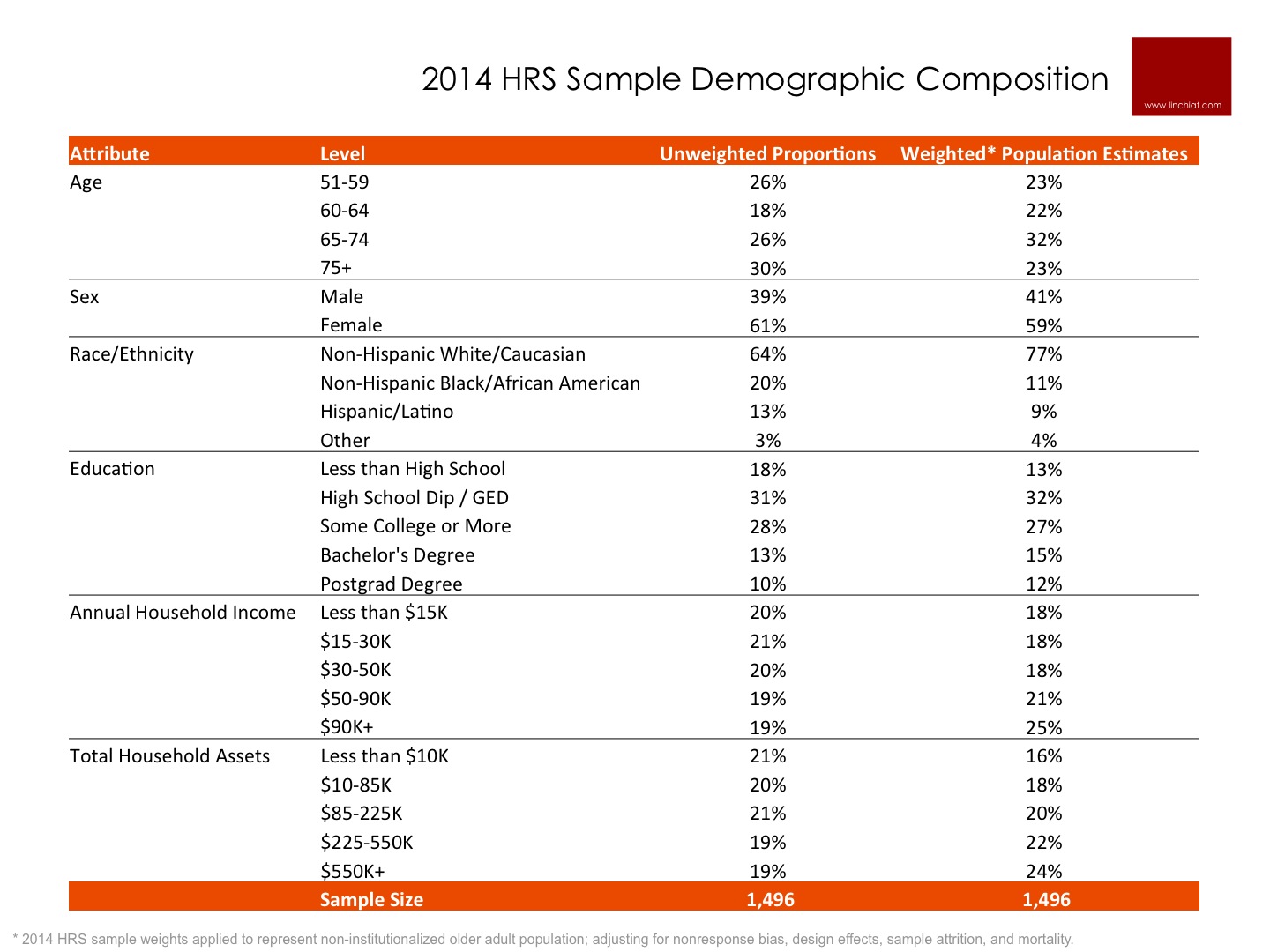This analysis highlights socioeconomic differences in arts participation among older adults in the USA. Data is drawn from a large-scale national survey designed to represent the population of Americans over the age of 50, with augmented samples to ensure sufficient representation of ethnic minorities. Output include:
- overall prevalence of arts participation among older adults
- varying patterns of arts participation by gender, age, and race/ethnicity
- socioeconomic differences between older adults who participate in the arts vs. those who do not
- socioeconomic differences by type of arts activity
This analysis is the first installment in a series of effort to mine arts participation data from the 2014 Health and Retirement Study (HRS), released in October 2015. The full paper will be presented at the 2016 NCCA Leadership Conference “The Creative Age: Global Perspectives on Creativity & Aging”, to be held in September 2016 in Washington, DC, USA.
Prevalence of Arts Participation. Older adults are more likely to be consumers of art than creators of arts. The majority of older adults attend some form of arts events in their communities (e.g. go to a movie, an art museum or gallery, an arts or crafts fair, attend a live performance) or read imaginative literature (novels, short, stories, poetry, and plays).
In contrast, only 1 in 4 older adults engage actively in arts creation. Among these participatory arts, the most prevalent activities were needlecrafts (weave, crochet, quilt, needlepoint, knitting, sewing) and jewelry making, or visual arts, which included painting, sculpture, pottery, ceramics; photography, graphic design, film-making; leatherwork, metalwork, and woodwork. Around 1 in 4 older adults reported dancing (including social dancing), and around 1 in 5 reported singing or playing a musical instrument. Creative writing was relatively rare with under 10% engagement among older adults.
Some art forms are preferred by women more so than men. Specifically, there is a clear gender divide in the prevalence of needlecrafts, jewelry making, and reading imaginative literature, such that women are far more likely to engage than men in those art forms. On the other hand, men are more likely than women to take up visual arts (painting, sculpture, pottery, ceramics; photography, graphic design, film-making; leatherwork, metalwork, and woodwork) and among men, there is a further age difference such that men age 65 or younger are more likely to be engaged in visual arts than men over 65 years of age. Women age 65 or younger are more likely to dance (includes social dancing) than women over 65 years of age, or men of any age.
Non-Hispanic White Americans are more likely than other ethnic groups to read novels, short stories, peotry etc. or dabble in visual arts; while African Americans are more likely to dance or sing and play musical instruments. Latino/Hispanic Americans consistently report the lowest levels of arts participation, at least on the art forms that were measured in the HRS survey questionnaire. This sample did not reveal any significant racial differences in likelihood of making needlecrafts or jewelry, or creative writing.
Note: For this analysis, the racial/ethnic groups are coded to be mutually exclusive such that White/Caucasian and Black/African Americans are not Hispanic Americans. In other words, respondents who self-identify as White Hispanics or Black Hispanics are included in the Hispanic/Latino group, and excluded from the White or Black categories.
Evidence of a Socioeconomic Divide. A clear chasm exists in household income and education level between older adults who report participation in arts activities vs. those who do not. As shown above, older adults who reported no arts activity at all have significantly lower annual household income and significantly fewer years of schooling.
Zooming in to the different forms of arts participation, there is also notable variance in socioeconomic attributes. For example, older adults who engage in creative writing tend to have more years of schooling, while those who make needlecrafts or jewelry tend to have fewer years of schooling. Older adults who dance (includes social dance) live in households with higher annual household income than those who engage in other creative arts activities.
About the Data Source. Data for this analysis is extracted from the Health and Retirement Study (HRS), a longitudinal panel survey designed to represent the population of Americans over the age of 50, with augmented samples to ensure representation of ethnic minorities. Since 1992, over 20,000 older adults have contributed to this treasure trove of longitudinal data on aging issues such as healthcare, cognitive functioning, physical functioning, social engagement, retirement, disability, wealth, family structure, and more. Respondents are interviewed face-to-face or over the telephone every other year, either in person or over the telephone.
A short module of arts measures was administered to a random subset of respondents in the 2014 HRS to collect data on arts participation. The 2014 HRS sample design permits us to generate robust population estimates on the prevalence of arts participation based on a diverse and nationally representative sample of older adults. All inferential statistics in this analysis are weighted by HRS final respondent weights to generate nationally representative population estimates. The HRS sample weights adjust for initial selection probabilities, cohort sample design effects, panel attrition and mortality; and are post-stratified to match the corresponding survey year’s March Current Population Survey (CPS) on the basis of the birth cohorts, gender and race/ethnicity. The HRS respondent weights thereby permit inferential projections to non-institutionalized older adults nationwide.
The HRS receives primary funding from the NIH National Institute on Aging, and is administered by the Institute for Social Research at the University of Michigan. More information on the HRS can be found here.
Acknowledgements: I am indebted to Dr. Mary Beth Ofstedal of the University of Michigan for her input on above analysis. This analysis is the first installment in a series of effort to mine arts participation data from the 2014 Health and Retirement Study (HRS), which was released in October 2015.





